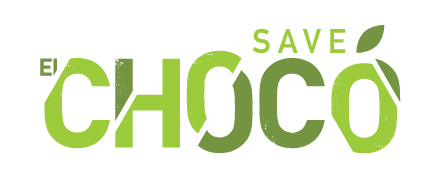As you work your way down the Andes towards the coast of Ecuador you enter one of the most biodiverse and threatened regions in the world. The Tumbes-Chocó-Magdalena biodiversity hotspot boasts extremely high levels of species diversity and endemism. The region is home to more than 11,000 species of vascular plants and over 900 species of birds. Sixty two of the bird species are restricted-range species (only found in the Chocó) the highest level in the Americas and one of the highest in the world. With such high levels of endemism come high levels of risk. Simulation models suggested that one third of the Tumbesian and Chocó endemic species will become extinct if an additional 1,000 km² of habitat is lost, which ranks the region among the most threatened global biodiversity hotspots*. Approximately 98% of native forest in coastal Ecuador has been cleared, rendering it one of the three most threatened tropical forests in the world **,***
Moss-backed Tanager (Bangsia edwardsi)
The remaining 2% is a patchwork of forest, some here and some there. One of the last strongholds is the Canandé region. Canandé harbors a number of globally threatened birds, many of them endemic to the Chocó such as Plumbeous Forest Falcon (VU), Great Green Macaw (EN), Scarlet-breasted Dacnis (VU), Baudo Guan (EN), Banded Ground Cuckoo (EN), Brown Wood-rail (VU), and Plumbeous Hawk (VU). More than 100 species of mammals have been recorded so far including the Jaguar (Pantera onca ). The Canandé area holds probably the most important population of the critically endangered Brown-headed Spider Monkey (Ateles fusciceps ), one of the 25 most endangered primates worldwide. The staggering tree diversity is worth mentioning too- the area harbors the largest population of one of the rarest endemic species in Ecuador, the endangered Ecuadendrum acosta - solisianum which is only known to exist in two localities.
Unfortunately, this remote haven isn’t free from the pressures to which the rest of the forest have succumbed. Heavy logging, palm oil, and burn and slash agriculture are all very present. With each secret revealed (Harpy Eagle, Jaguars, Banded Ground Cuckoos, or new species) it reminds me how important this remaining patch of forest is and quickly it can go from paradise to paradise lost.
Oophaga sylvatica Near Threatened
If you would like to make a donation please visit https://www.rainforesttrust.org/savethechoco/
Follow us on Instagram https://www.instagram.com/save_the_choco/
1. Brooks TM, Mittermeier RA, Mittermeier CG, Da Fonseca GAB, Rylands AB, Konstant WR, Flick P, Pilgrim J, Oldfield S, Magin G, Hilton-Taylor C (2002) Hotspots: Earth’s biologically richest and most endangered terrestrial ecoregions. Conserv Biol 16:909-923.
2. Dodson CH, Gentry AH 1991: Biological extinction in western Ecuador. Ann Missouri Bot Gard. 78: 273–295.
3. Mosandl R, Günter S, Stimm B, and Weber M 2008: Ecuador suffers the highest deforestation rate in South America. Ecological Studies 198: Gradients in a tropical mountain ecosystem of Ecuador. Heidelberg, Germany: Springer Verlag;. pp. 37–40.
Brown-headed spider monkey (Ateles fusciceps fusciceps) Critically Endangered





